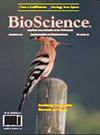Fungal profile of eggshells from commercial and free-range hens of a supermarket chain in Fortaleza, CE, Brazil
IF 0.5
4区 农林科学
引用次数: 0
Abstract
Eggs are perishable and fragile foods because of their easy contamination by different microorganisms, such as fungi. Hence, research on egg safety and quality has been recently developed worldwide to minimize illness transmitted by this food, although most present mainly pathogenic bacteria. Thus, this study identified potentially pathogenic fungal species in eggshells from free-range and commercial hens offered in supermarkets in Fortaleza, CE, Brazil. The research was performed at the Vettings laboratory at the State University of Ceará (UECE) with 40 eggs: 20 from commercial and 20 from free-range hens. The eggshells were assessed using the dextrose evaluation method for pathogenic cultivation, commensal, and yeast fungi. Subsequently, readings were taken to identify and count the fungi on a binocular light microscope in 100x increments. Both egg categories showed a significant number of colony-forming units (CFU). The study identified eight different fungal species in both egg production types. The most prevalent fungal colonies in the free-range hen lineage (brown shell) were yeast spp. and Penicillium citrinum, and the laying hen lineage (white shell) had mostly Penicillium spp. and yeast spp. Therefore, both egg production systems showed similar fungal contamination, which suggests that the manipulation and/or storage are adequate despite the lack of strict food safety regulations or supervision for eggs in Brazil.巴西中欧福塔莱萨一家连锁超市的商品蛋鸡和散养蛋鸡蛋壳的真菌特征
鸡蛋是易腐易烂的食品,因为它很容易受到不同微生物(如真菌)的污染。因此,最近全世界都在开展鸡蛋安全和质量研究,以尽量减少这种食品传播的疾病,尽管大多数鸡蛋主要是致病菌。因此,本研究在巴西中欧福塔莱萨市超市出售的散养蛋鸡和商品蛋鸡的蛋壳中发现了潜在的致病真菌物种。研究在塞阿拉州立大学(UECE)的 Vettings 实验室进行,共使用了 40 枚鸡蛋:20 枚来自商品鸡蛋,20 枚来自散养母鸡。使用葡萄糖评估法对蛋壳进行了病原真菌、共生真菌和酵母真菌的评估。随后,在双目光学显微镜上以 100 倍的增量对真菌进行识别和计数。两类菌卵都显示出大量的菌落形成单位(CFU)。研究在两种产蛋类型中都发现了 8 种不同的真菌。因此,两种鸡蛋生产系统都显示出相似的真菌污染,这表明尽管巴西缺乏严格的鸡蛋食品安全法规或监管,但操作和/或储存是适当的。
本文章由计算机程序翻译,如有差异,请以英文原文为准。
求助全文
约1分钟内获得全文
求助全文
来源期刊

Bioscience Journal
AGRICULTURE, MULTIDISCIPLINARY-AGRONOMY
CiteScore
1.10
自引率
0.00%
发文量
90
期刊介绍:
The Bioscience Journal is an interdisciplinary electronic journal that publishes scientific articles in the areas of Agricultural Sciences, Biological Sciences and Health Sciences. Its mission is to disseminate new knowledge while contributing to the development of science in the country and in the world. The journal is published in a continuous flow, in English. The opinions and concepts expressed in the published articles are the sole responsibility of their authors.
 求助内容:
求助内容: 应助结果提醒方式:
应助结果提醒方式:


